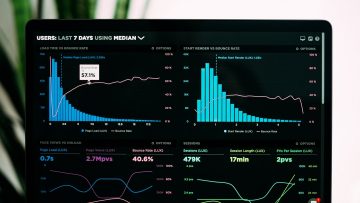Static testing involves evaluating a software application without running the actual code. It is carried out in the initial phases of development to pinpoint project document issues through various methods such as reviews, walkthroughs, and inspections.
Types of Static Testing
Manual Methods
- Inspections.
- Informal Reviews
- Technical Review
- Walkthroughs
1. Inspections: Inspection in static testing is a formal and systematic process of evaluating documents or software artifacts to detect errors. It involves planning, kickoff meetings, individual preparation, inspection meetings, and follow-up actions. Inspections aim to ensure document quality and adherence to standards. It involves different team members with specific roles. Moderator arranges and leads the inspection meetings, ensuring the process is followed effectively. They also make sure that all identified defects are addressed and resolved. The author is responsible for the document being reviewed and is accountable for correcting any identified defects and enhancing its quality. Reviewers play a critical role in the inspection by examining the documents thoroughly, identifying defects, and highlighting any issues during the review process. Other team members may also be involved, such as the manager who oversees the planning process, ensuring that the inspection goals are achieved.
2. Informal Reviews: Informal reviews are a more casual and flexible approach to evaluating documents or software artifacts. It’s like having a friendly discussion among team members to uncover potential issues or improvements. There are no strict roles or checklists involved. Instead, it’s all about open conversations, brainstorming, and sharing insights. Informal reviews prioritize collaboration and creativity, allowing team members to express their opinions and offer suggestions in a relaxed setting. This type of review promotes a friendly and supportive atmosphere where everyone’s input is valued, leading to better understanding, improved quality, and stronger team dynamics.
3. Technical Review: Technical reviews are thorough evaluations of documents or software artifacts by experts with deep technical knowledge. They focus on technical aspects like design, code quality, and adherence to standards. The goal is to improve quality, identify risks, and enhance performance. Technical reviews involve constructive discussions, feedback sharing, and knowledge transfer. They ensure that products meet high technical standards and result in robust solutions.
4. Walkthroughs in the context of software development are a type of informal review process where the author of a document presents it to other team members to solicit feedback and gain a better understanding. In a walkthrough, the author acts as the presenter, guiding other participants through the documents. The primary objective is to ensure a shared understanding among team members and to gather input and suggestions to improve the quality of the work. Unlike inspections, walkthroughs are less formal and typically do not follow a structured checklist or predefined roles. They prioritize open discussions and collaboration among team members, allowing for a more flexible and creative exchange of ideas.
Walkthroughs can be conducted at different stages of the development process, such as during the requirements gathering phase or when reviewing a software design. They can also be used for code reviews to ensure coding standards are followed and to identify potential issues or improvements. Overall, walkthroughs help improve the quality of the work by allowing for active participation, fostering collaboration, and facilitating knowledge sharing among team members, ultimately leading to enhanced overall product quality.
Automation Methods
- Static Analysis
- Control Flow Analysis
- Data Flow Analysis
- Failure Analysis
1. Static Analysis involves using automated tools that perform scanning and analysis of source code without executing it. This enables the detection of coding errors like unused variables, unreachable code paths, or potential security vulnerabilities by leveraging various algorithms designed specifically for these purposes.
2. Control flow analysis focuses on understanding how control structures within a program interact during execution (e.g., loops, conditions). By analyzing this flow statically, potential issues like infinite loops or unreachable blocks can be identified before running any tests.
3. Data flow analysis deals with tracking data dependencies between variables within a program statically (without execution). It helps identify bugs related to uninitialized variables, null pointer dereferences, data races in multi-threaded environments, and other similar issues.
4. Failure analysis aims to identify potential points of failure by analyzing code or components that have been previously identified as problematic. This method is often used for regression testing to prevent past defects from reoccurring in subsequent releases.
Interface analysis involves examining the interfaces between software modules or components through static means. By ensuring that inputs and outputs are aligned correctly, this type of analysis helps detect potential interoperability issues early on.











